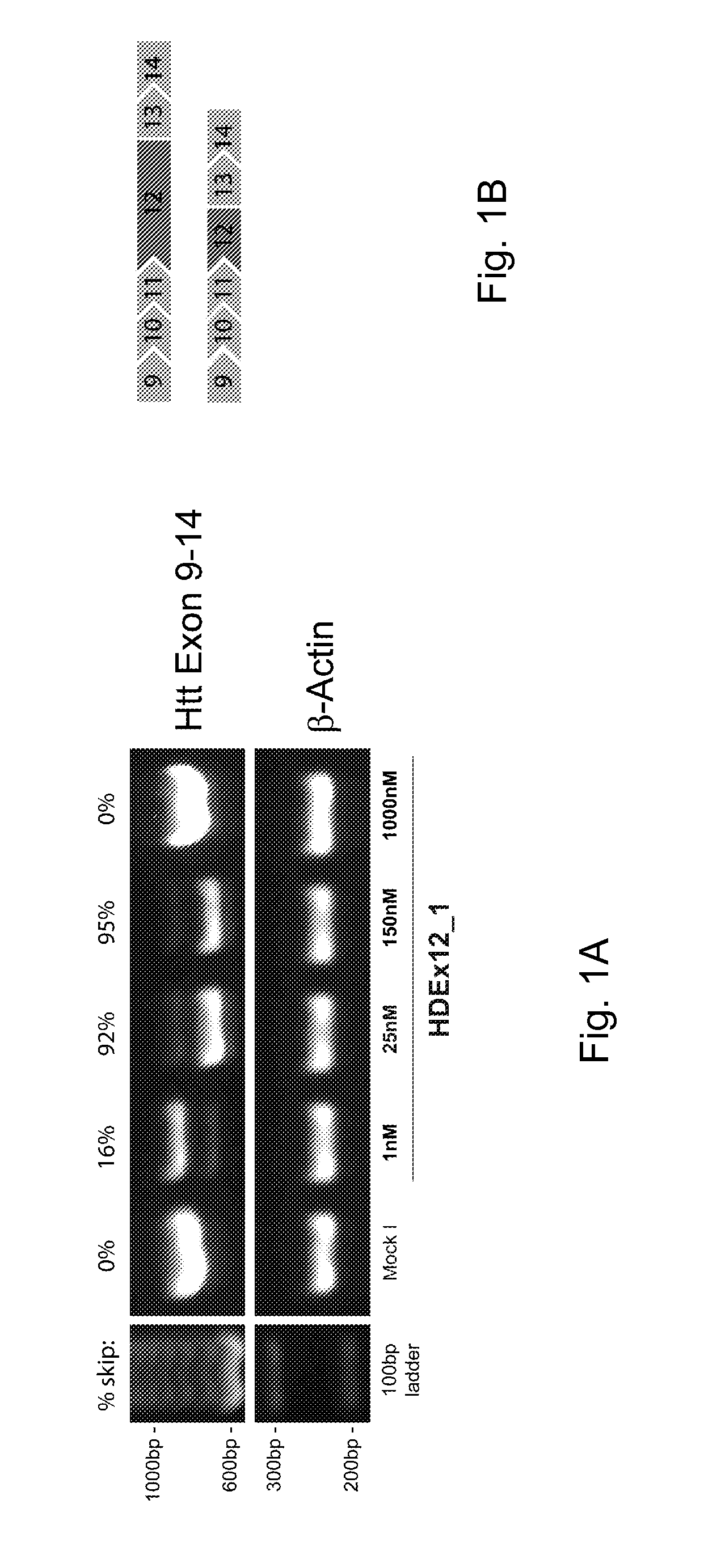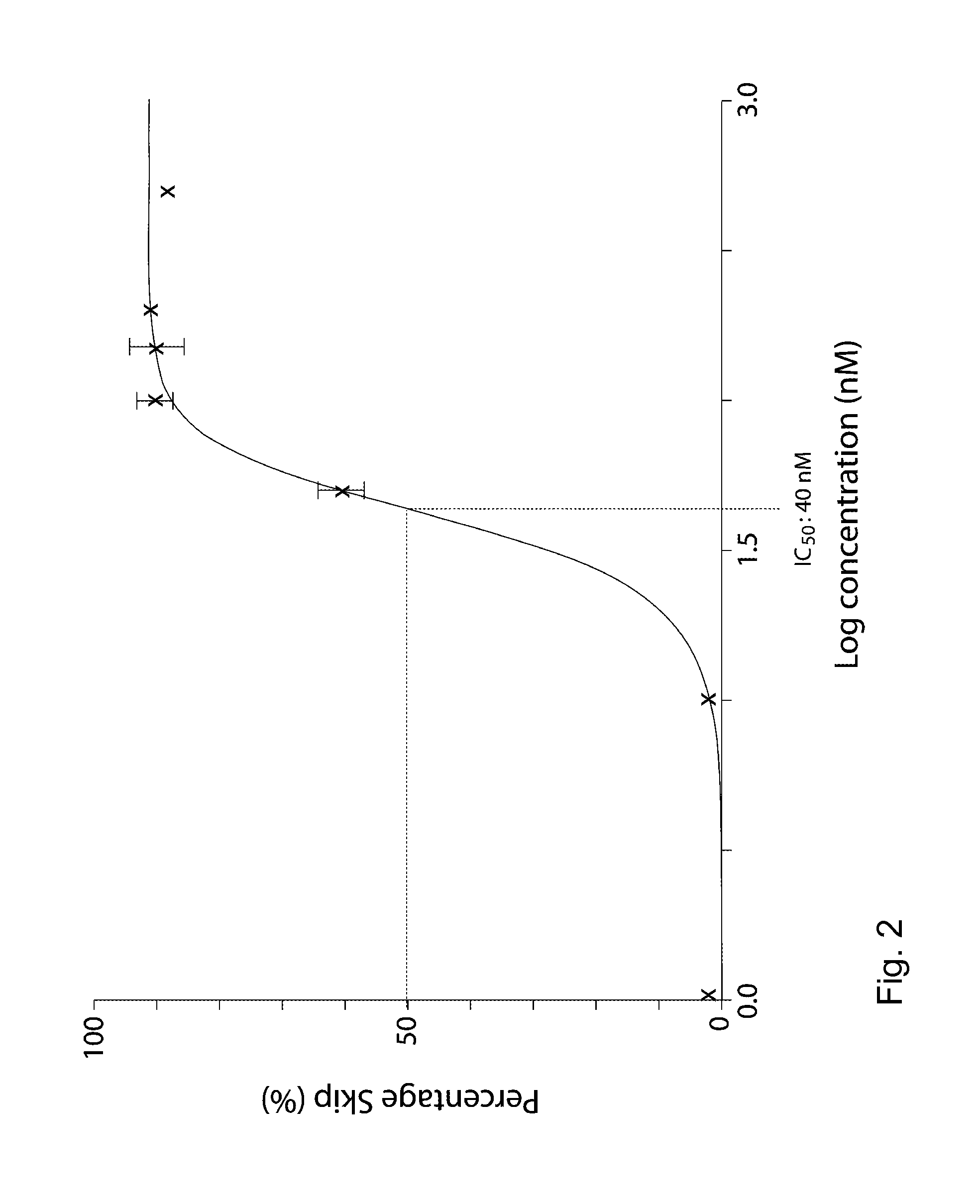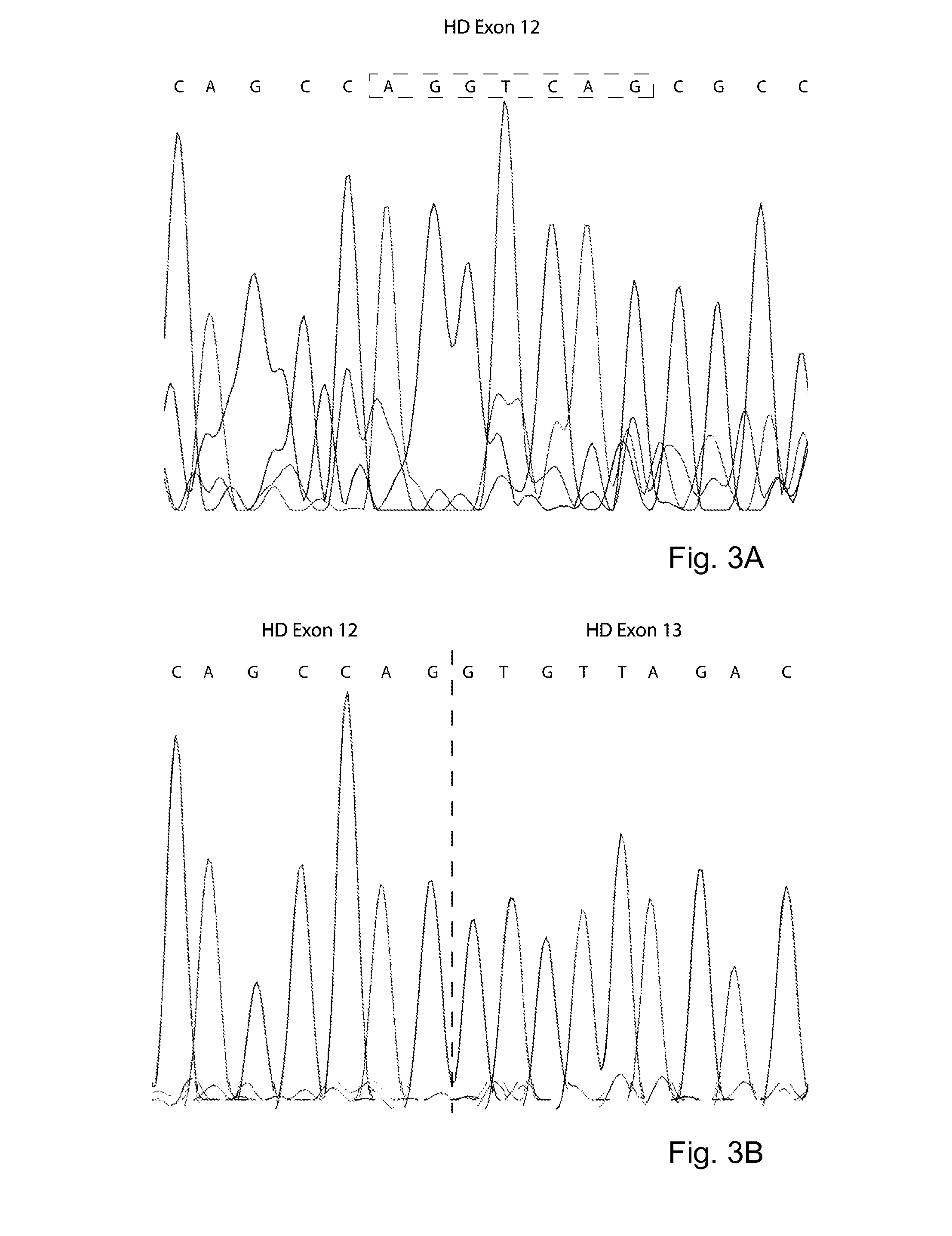Antisense oligonucleotide directed removal of proteolytic cleavage sites from proteins
a proteolytic and anti-oligonucleotide technology, applied in the field of biotechnology and genetic and acquired diseases, can solve the problems of difficult implementation of such strategies in the clinic, and achieve the effects of finite removal effect, high level of skipping, and long life span
- Summary
- Abstract
- Description
- Claims
- Application Information
AI Technical Summary
Benefits of technology
Problems solved by technology
Method used
Image
Examples
examples
[0060]AON-mediated exon skipping in neurodegenerative diseases to remove proteolytic cleavage sites. AON-mediated exon skipping in Huntington's disease to remove proteolytic cleavage sites from the huntingtin protein
Methods
AONs and Primers
[0061]All AONs consisted of 2′-O-methyl RNA and full length phosphorothioate backbones.
Cell Cultures and AON Transfection
[0062]Patient fibroblast cells and human neuroblastoma cells were transfected with AONs at concentrations ranging between 1-1000 nM, using Polyethylenemine (PEI) ExGen500 according to the manufacturer's instructions, with 3.3 μl PEI per μg of transfected AON. A second transfection was performed 24 hours after the first transfection. RNA was isolated 24 hours after the second transfection and cDNA was synthesized using random hexamer primers.
Cell Lines Used:
[0063]FLB73 Human Fibroblast Control
[0064]GM04022 Human Fibroblast HD
[0065]GM02173 Human Fibroblast HD
[0066]SH-SY5Y Neuroblastoma Control
[0067]Quantitative Real-Time PCR (qRT-P...
PUM
| Property | Measurement | Unit |
|---|---|---|
| neurodegenerative disorder | aaaaa | aaaaa |
| structure | aaaaa | aaaaa |
| processing | aaaaa | aaaaa |
Abstract
Description
Claims
Application Information
 Login to View More
Login to View More - R&D
- Intellectual Property
- Life Sciences
- Materials
- Tech Scout
- Unparalleled Data Quality
- Higher Quality Content
- 60% Fewer Hallucinations
Browse by: Latest US Patents, China's latest patents, Technical Efficacy Thesaurus, Application Domain, Technology Topic, Popular Technical Reports.
© 2025 PatSnap. All rights reserved.Legal|Privacy policy|Modern Slavery Act Transparency Statement|Sitemap|About US| Contact US: help@patsnap.com



